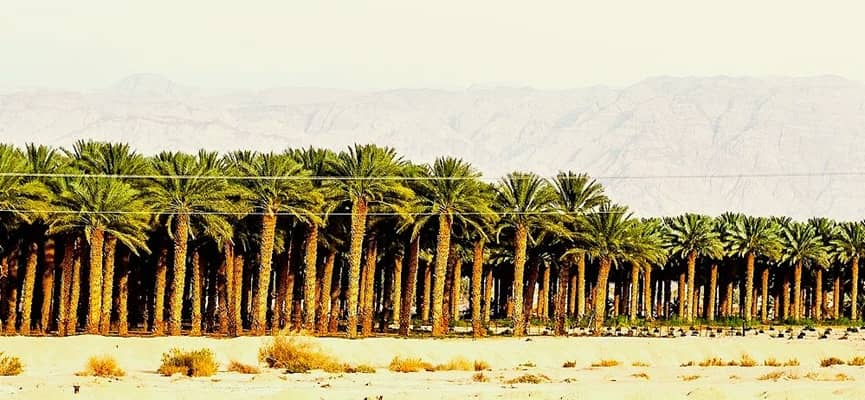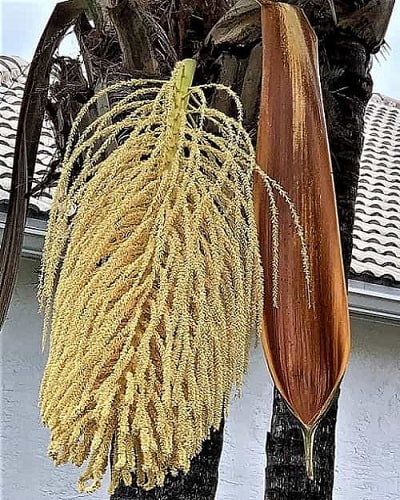- Home
- Palm Fun Facts
- Interesting Facts
- How Many Palms?
How Many Palms Are There?
Palm trees awaken images of tropical paradises, but their variety is often underestimated.
Exactly how many palm tree species are there is a complex question. Around 2,600 species are currently recognized. Continuous research and new palm discoveries update the number all the time!
From towering coconut palms to small, shrub-like varieties, their adaptability allows them to grow in various climates world-wide.
We'll explore the intriguing world of palm tree numbers, answering how many palms exist.
Understanding Palm Tree Diversity and Classification
 How many palms are in the varied environments of our planet?
How many palms are in the varied environments of our planet?Palm trees are one of the largest and most diverse plant families on Earth.
These plants range from specimens reaching heights of 200 feet (The Tallest in the World!) to small understory palms just a few feet tall. Found primarily in tropical and subtropical regions.
Even though palms are that iconic symbol of tropical and subtropical landscapes, they grow in various environments.
- They're found in rainforests
- They're found in Deserts.
- They're found in coastal areas.
- They're found in Unexpected Temperate Climates.
Since palm species come in an amazing assortment of shapes, sizes, and habitats, finding their exact totals isn't an easy or finalized task.
Imagine tramping through thick understory jungles, searching for palms. Breathing in the sultry humid air and swatting mosquitoes. Watching where you step, that a venomous snake isn't ready to strike!
That's what palm research can be like. Then imagine coming upon a palm plant that you think has never been seen before!
More investigation will be needed to categorize it. Determining all its intricate features. To figure out if it's truly a new species. But all worth it to the palm botanist!
At Mission: Palm Trees
We help palm lovers simplify their searches and ease their concerns. Our articles are meant to inform, while having fun, easily Finding What You Want or Need. We eliminate unnecessary shoptalk & tiring research. We Discover For You!
Which Country Has the Most Palms?
Are you curious about which country boasts the highest number of palm trees?
Join us on this virtual adventure. We'll find the country with the most palms.
Yet you may want to consider the different categories for which countries can be awarded that title. We'll show you how one country can win in one area. And other countries win for other areas.

The Ultimate Reveal:
The Country with the Most Palm Trees
You'll find palm trees around the globe. But which country can claim the most?
There hadn't been any real studies to get the answer. Until one was published on May 4, 2020.
Plant biologists presented that groundbreaking study. They collaborated to answer this very question. Their findings set forth that tree palms are predominantly from the tropical regions, with a notable concentration in the Neotropics.*
Concluding that "The results of our analysis of tree palm abundance show that tree palms are not only quintessentially tropical, but also overwhelmingly Neotropical."*
Next we'll see which Neotropical country holds the highest total for how many palms there are!
*Muscarella R, Emilio T, Phillips OL, et al. The global abundance of tree palms. Global Ecol Biogeogr.2020;29:1495–1514. doi.org/10.1111/geb.13123
Hotspots for Palm Tree Abundance: The Neotropics
That study identified the Northwestern countries of South America, as the area for the most palms. In what's considered "The New World."
Especially Colombia, Peru, Bolivia, and Ecuador. These regions had the highest density of palm trees.
But the research specifically focused on counting "Tree Palms"—solitary species (those with one single trunk). While clustering palms (those with multiple stems) were not counted. That surely skews their conclusions!
Other experts have varied views on where most palm trees grow. Which leads to alternative opinions. They include:
- Indonesia’s Lush Islands: This country, known for its 3,000 islands, has a healthy palm population. Yet Indonesia is a major producer of palm oil. That influences palm numbers because they cultivate the African oil palm (Elaeis guineensis).
- Some have named Iraq as the top country for palms growing. (See Our FAQ)
Despite these opinions, we conclude that Colombia is the top contender as the country with the most palms. Because its ecosystems range from coastal plains and grasslands to rugged mountains and rainforests.
Colombia offers ideal habitats for the abundance of various palms, supporting their needs.
Who Has the Most Palm Species? A Close Match
 Imagine searching through the Devils Throat Falls area in Argentina for palm species.
Imagine searching through the Devils Throat Falls area in Argentina for palm species.The fascination with palm tree numbers must include varieties.
Let's count which country has the most palm species. Catalogs listing species information suggest potential candidates:
- Colombia: With approximately 289 palm species, Colombia is a strong competitor. It's the proud home of the Quindio Wax Palm, the world's tallest palm and the national tree of Colombia.
- Brazil: This close rival has about 300 palm species, according to another catalog. Yet the exploration of Brazil’s dense rainforests may reveal more unknown species.
The rivalry between Colombia and Brazil highlights the ongoing and evolving nature of tropical flora exploration. As new species are discovered.
This race for the title of the most palm-rich country goes on. For more categories.
More Countries Revel in Palm Fruit Production
Other countries are known for large-scale date palm farming. Those cultivated palms don't directly contribute to the wild palm tree counts.
Yet it's a notable mention for their economic importance in the agricultural sector. We'll see where this takes place.
Date Palms of the Middle East and North Africa
The Middle East and North Africa are famous for their vast Date Palm Groves.
Countries like Iraq, Iran, Saudi Arabia, Egypt, Algeria, and Libya are leading producers of dates. It's no wonder as Palm Date fruit is a staple in their cultures and economies.
 All kinds of treats can be made from dates.
All kinds of treats can be made from dates.Current Global Leaders in Palm Tree Cultivation
Other countries have vast numbers of palms, mostly in cultivation.
- Iran: With approximately 21 million palm trees.
- Saudi Arabia: Around 12 million palm trees.
- Algeria: About 9 million palm trees.
- Egypt & Libya: Each with roughly 7 million palm trees.
The Role of Date Palms in Agriculture
In these regions, date palms are cultivated for fruit production. Supporting locality vibrancy and livelihoods throughout the Middle East and North Africa.
That's versus the naturally growing palms counted in tropical studies.
Date cultivation makes them the largest date producers world-wide.
 Date palm grove from fruit production in Negev, Israel.
Date palm grove from fruit production in Negev, Israel.Understanding the Difference:
Wild vs. Cultivated Palm Trees
Now think again about how many palm trees are there. And which country has the most palms.
Could we include these Middle Eastern & North African countries in the answer?
The thing is, when counting their palms, the totals must be discounted. As these palm trees are mostly those grown for commercial production.
Cultivated palms on commercial farms don't contribute to biodiversity.
That's typically highlighted in studies of wild palm distribution. Those wild Palms Natively Growing, are counted to focus on species variety and palm conservation. For a more accurate answer to how many palms are there.
Related FAQs
Which country produces the most dates?
Which country produces the most dates?
Iraq has over 500 species of date palms, with only a few types producing commonly loved fruit.
According to the World Sensorium/Conservancy, in the 1950s, Iraq had more than 33 million date palm trees. With regional strife and climate change, palms become victims.
According to the Iraqi agriculture ministry, "for the first time since the 1980s", date palm numbers have risen to "more than 22 million", up from a low of 8 million. [Ref: newarab.com/features/iraqi-farmers-fight-hard-protect-treasured-date-palms]
But it's a battle given many difficulties. Yet, per statistics, it still seems Iraq produces the most dates of any country. [Ref: statista.com/statistics/960426/harvested-area-of-dates-by-leading-country-worldwide/]
What is the palm tree scientific name and family?
What is the palm tree scientific name and family?
When thinking of how many palms are there, remember they are the Arecaceae family. (Sometimes called Palmae.) That's the scientific name of palms in general. Their scientific order is Arecales. Palm species are then categorized into 181 genera. We have more detail, if you need that, where we talk about What is a Palm Tree>
Takeaways for how many palms are there
You've discovered there are several categories of countries with most palm trees.
Counting them for an exact number is difficult, and not an absolute. There are naturally growing, native palm trees, there are those growing palms for landscaping, and there are palms grown for commercial fruit production.
So, how many palms are there? Can we be happy with knowing only the approximate, but changing total of palm species world-wide?




